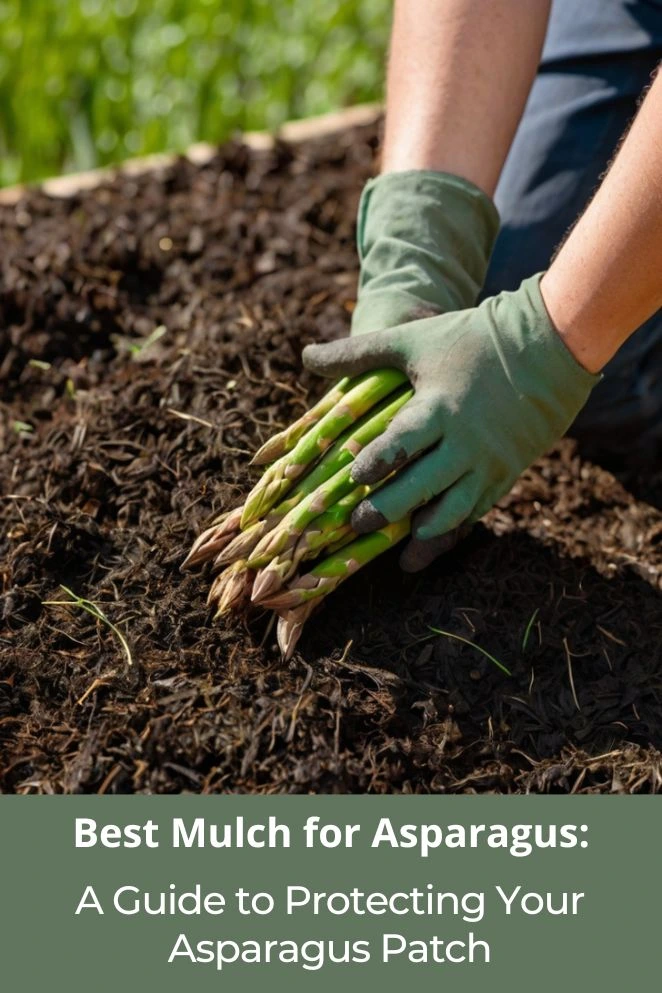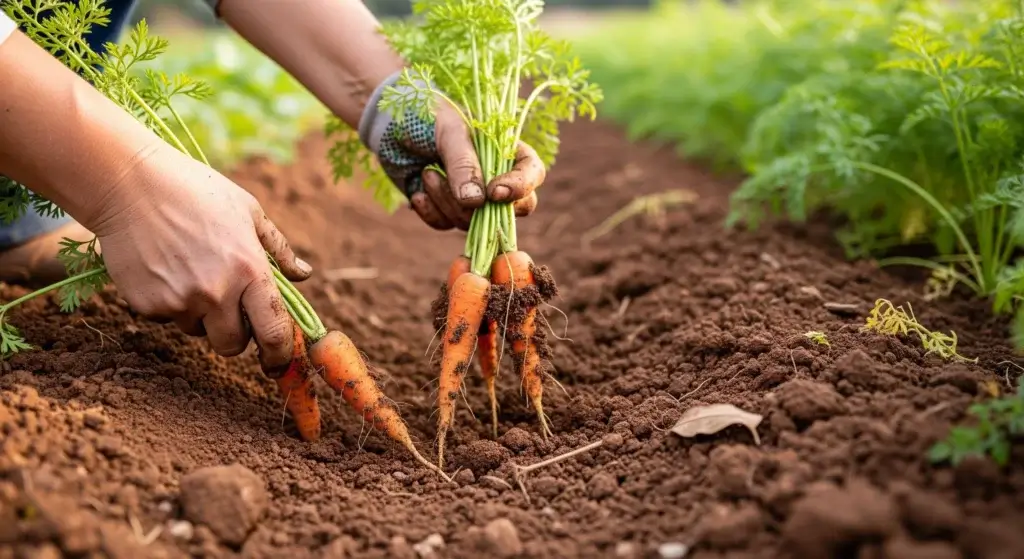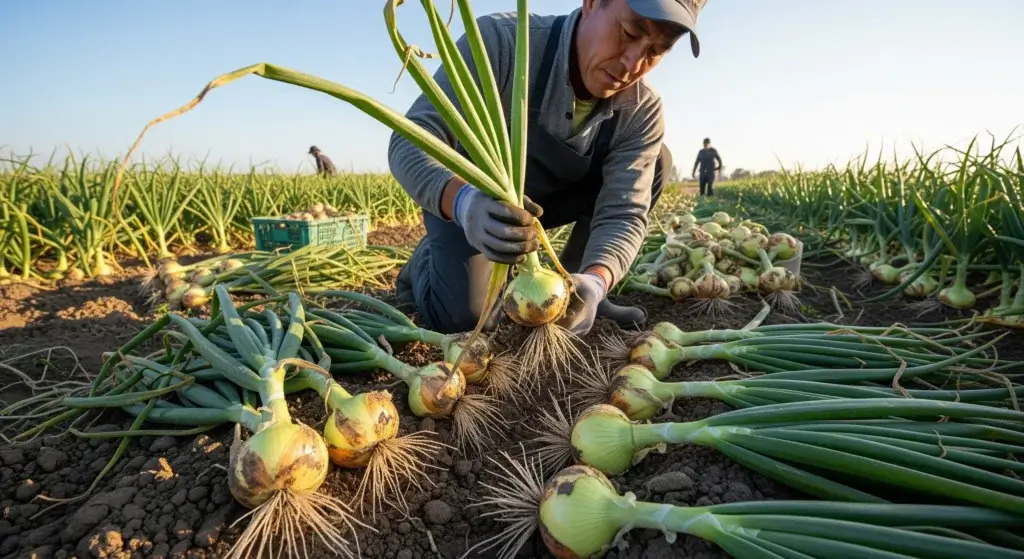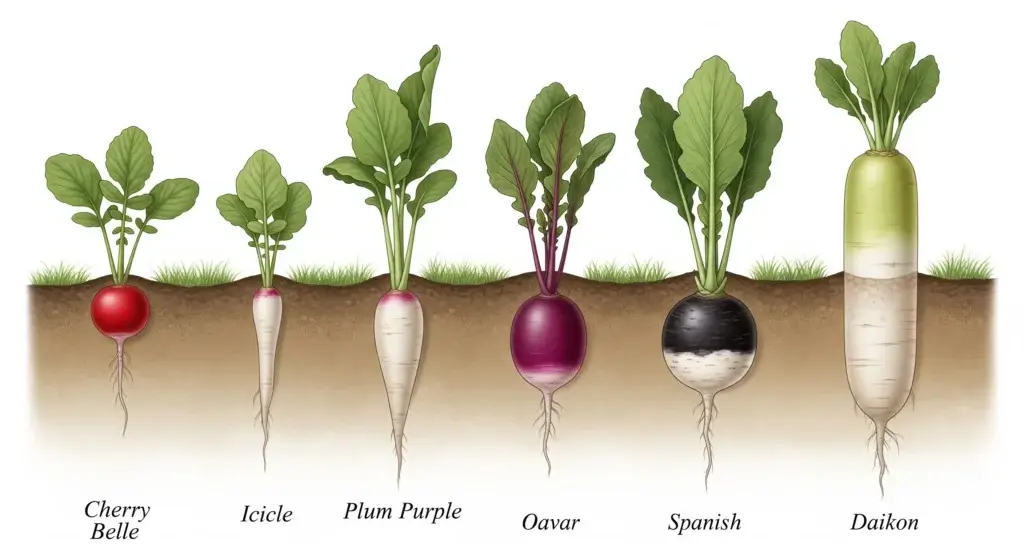
Most people just plant and pray, but if you want spears so good your friends say, “No way you grew this,” you’ve gotta mulch right.
Mulch is like your asparagus’s ride-or-die—it keeps the soil moist, blocks weeds, and even feeds the bed as it breaks down.
Do it right, and your plants will thrive for decades with way less effort from you.
Want your patch to go from “meh” to superstar? Let’s get into it.
Why Mulching Asparagus Is Essential for Success
Mulch isn’t just garden bling—it’s like giving your asparagus superpowers.
Think of it as a bodyguard. Weeds? They’re the bullies of your bed, stealing water, nutrients, and sunlight.
A thick mulch layer? Boom. Bullies blocked. No light, no weeds, simple as that.
It’s also a giant, cozy blanket. Keeps the soil juicy on hot days, cool in summer, and warm in winter.
No more asparagus meltdowns because the temperature’s off.
Bonus points: mulch isn’t lazy.
As it breaks down, it feeds the soil like a slow-release smoothie, waking up tiny microbes that help your plants level up year after year.
And goodbye mud splashes! Rain or watering won’t leave your spears dirty, so you get cleaner, healthier harvests.
Mulch isn’t optional—it’s VIP treatment. Hook your asparagus up, and future you will be high-fiving every perfect spear.
Top 7 Best Mulch Options for Asparagus
If you want asparagus that’s basically unstoppable, mulch is your secret weapon.
Here’s the lowdown on the best options and why they rock.
1. Straw
Straw is basically the VIP treatment for asparagus. It keeps soil moist, blocks weeds, and lets spears poke through without trouble.
Why it rocks:
- Lightweight, easy to spread
- Provides insulation for roots
- Breaks down slowly, feeding soil long-term
- Looks natural and neat
Pro tips:
- Apply 3–4 inches thick
- Use wheat, barley, or oat straw
- Skip hay—too many seeds
- Bonus: EZ-Straw is processed and weather-proof, perfect if your patch gets wild weather
2. Compost
Compost isn’t just mulch—it’s like a smoothie for your soil. It feeds, improves structure, and keeps microbes happy.
Why it rocks:
- Immediate + slow-release nutrients
- Improves drainage
- Supports good microbes
- Retains water
Pro tips:
- Spread 2–3 inches thick
- Use well-aged compost
- Reapply every 6–8 weeks
- Mix with other organics for best results
3. Wood chips
Wood chips stick around and slowly break down, adding nutrients over time.
Perfect if you don’t want to mulch constantly.
Why it rocks:
- Suppresses weeds like a boss
- Lasts 2–3 years
- Adds organic matter
- Often free from tree services
Pro tips:
- Go hardwood, cedar is bonus points (repels insects)
- Keep mulch off the stems
- Stir occasionally to prevent matting
4. Shredded leaves
Autumn leaves are basically free mulch gold.
Shred them and you’ve got a nutrient-rich blanket.
Why it rocks:
- Free and renewable
- Adds minerals
- Breaks down to perfect soil
- Supports beneficial insects
Pro tips:
- Shred leaves to prevent matting
- Spread 3–4 inches thick in fall
- Mix leaf types
- Avoid thick-leaved varieties like magnolia
5. Well-rotted manure
Manure is like giving your asparagus a steady diet of nutrients.
Nitrogen, phosphorus, potassium—you name it.
Why it rocks:
- Super rich in nutrients
- Improves organic matter
- Boosts microbial life
- Slow-release, so plants stay happy
Pro tips:
- Only use well-rotted manure
- Apply early spring before spears
- Mix with other organics to avoid compaction
- Source organic if possible
6. Grass clippings
Fresh grass clippings can be a quick-hit mulch. Just make sure they’re chemical-free.
Why it rocks:
- High nitrogen
- Free if you mow the lawn
- Breaks down fast, feeding soil
- Keeps moisture locked in
Pro tips:
- Thin layers (1–2 inches)
- Let them dry a bit before spreading
- Mix with longer-lasting mulch
7. Pine needles
Pine needles (pine straw) are awesome if your soil needs a little pH boost. They drain well and look neat.
Why it rocks:
- Naturally acidic
- Drains like a champ
- Long-lasting
- Looks tidy and uniform
Pro tips:
- Only use in pine-friendly regions
- Layer like any other mulch
- Combine with compost for extra nutrition
How to Apply Mulch to Your Asparagus Bed
Time to roll up your sleeves and give your asparagus the VIP treatment.
Mulch isn’t just decoration—it’s survival gear.
When to mulch
- Spring: Right before the first green spears pop up. Think of it as tucking them in with a fresh blanket as they wake up.
- Fall: After you’ve chopped down the sad, yellow ferns. It’s like giving your plants a warm winter coat so they don’t shiver.
How to lay it down right
- Prep the stage: Pull every weed—roots and all. If the soil’s dry, give it a drink first. You wouldn’t want to make a bed on dusty ground, right?
- Don’t strangle the crown: Leave about a fist’s width around the base of each plant. Think of it as a mulch donut, not a volcano. No choking the spears!
- Pile it on (but not too much): Spread 3–4 inches thick. Any thicker and your spears will have to fight their way out like they’re in a zombie movie.
- Water it in: Give a light sprinkle to settle the mulch and kickstart decomposition.
- Keep an eye on it: Mulch breaks down over time. If it’s thinning, toss on another inch—easy fix.
Pro tips for different mulches:
- Straw or leaves: Light stuff—can blow away. Wet it lightly if it’s windy.
- Wood chips: Heavy = stays put. Don’t overdo it or spears can’t push through.
- Grass clippings: Breaks down fast = great soil snack. Just reapply every few weeks and make sure it’s chemical-free.
Do it right, and your asparagus will grow so happy it’s like they’re cheering you on. You’ve got this.
Common Mulching Mistakes to Avoid
Mulch is your asparagus’s BFF—but mess it up, and it can turn into a nightmare.
Here’s what to watch out for:
1. Mulching too close to crowns
Pile mulch right against the crown and you’re basically inviting rot and pests over for a party.
Keep a 2–3 inch “breathing zone” around each plant—think of it like giving them personal space.
2. Using fresh manure
Fresh manure is like dumping hot sauce on your roots—it’ll burn them and can bring nasty pathogens.
Always use well-aged manure (6–12 months). Slow and steady wins the nutrient race.
3. Applying mulch too thickly
Thick mulch might seem cozy, but too much and your spears have to fight to get out.
It can even suffocate the roots. Stick to the recommended 3–4 inch layer.
Your asparagus isn’t a superhero—they can’t punch through a wall.
4. Ignoring seasonal needs
Mulch has to stay loose and crumbly so water penetrates and spears can grow through it.
Adjust your thickness and type depending on the season and your local weather.
Rainy season? Lighten it up. Dry season? Layer it smart.
5. Using mulch with weed seeds
Some mulches like hay or fresh clippings are sneaky—they bring weed seeds straight to your bed.
Only use clean or well-composted materials, unless you enjoy endless weeding marathons.
Troubleshooting Common Mulch Issues
Mulch is awesome… until it decides to be a drama queen.
Here’s how to deal with the usual headaches:
1. Mulch matting & water repelling
If your mulch gets all matted and water just sits on top like it’s scared to go in, grab a rake or fork and fluff it up.
Think of it as aerating your bed—suddenly, water can sneak down to the roots again.
2. Pesky mulch pests
Mulch usually brings good bugs, but sometimes it’s a pest party. Keep an eye on it.
If critters start causing trouble, tweak the type or thickness of your mulch. A little adjustment goes a long way.
3. Slow spear emergence
If your spears are playing hide-and-seek and struggling to break through, you probably piled the mulch too thick.
Either thin it out or switch to a lighter material. Spears aren’t ninjas—they need a clear path!
4. Nutrient imbalances
Some mulches hog nitrogen while they decompose, leaving your asparagus looking pale and sad.
If you see yellowing, toss in some nitrogen-rich material to balance things out—like giving your plants a protein shake.
Conclusion: Building a Thriving Asparagus Patch
Mulch isn’t just busywork—it’s your asparagus’s secret weapon.
Done right, it’s like giving your plants a VIP pass: steady moisture, zero weed competition, and a slow-release feast all season.
Straw, compost, wood chips—pick your fighter and build a self-fertilizing, resilient bed.
The best part? Once it’s set up, your asparagus basically takes care of itself. Less weeding, less watering, more eating.
Those first tender spears? Pure victory.



